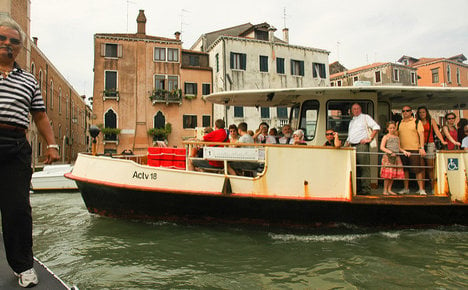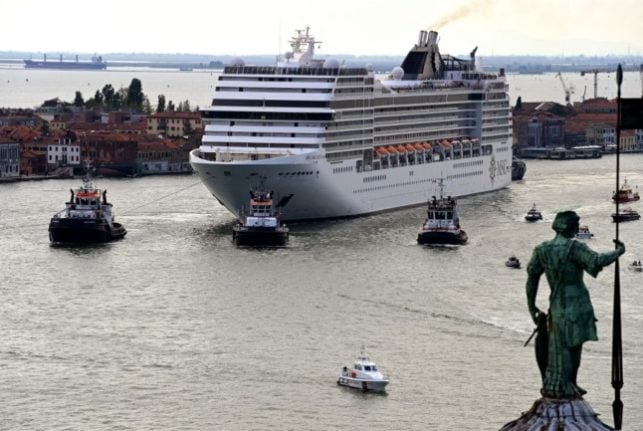In a bid to make one of the most famous cities in the world more “liveable”, only those with a ‘Venezia Unica Oro’, or gold card, proving they’re Venetian, will be given priority boarding, La Repubblica reported.
All others must waited patiently – in a different queue.
The measure will be put in place at eight vaporetto, or water bus, stops from June, initially as a trial.
“This is a way of saving the city and making it more liveable,” mayor Luigi Brugnaro said after the project was given the green light at a meeting with Actv, the company that manages local public transport, on Wednesday.
Tourists have long provoked ire among the 55,000 residents in Venice’s historic centre, who are forced to share the ferries with them – and their bulky suitcases – on their commute.
So needless to say, they support the move to make visitors wait in line.
“Tourists sit with their suitcases in their arms while we are forced to stand,” wrote one commuter on Facebook.
The water buses ferried some 70 million passengers around last year. The city itself attracts some 20 million visitors a year. Over the recent Easter weekend alone, 300,000 people came.
The queue plan will be in place at water bus stops including Canal Grande, Santa Chiara, Santa Lucia e Rialto train station, as well as San Marco and the islands of Lido, Murano and Burano.
“A worker who wants to get home after spending eight hours in the heat of the glass factory in Murano, or a mother who has to rush to collect her child from nursery, should be able to do so without huddling together with coach parties, or with the risk of delay,” the mayor added.
Whether the plan works as intended remains to be seen.
Similar initiatives by previous mayors have either failed, or been shrugged off as a joke.
Giorgio Orsoni, who resigned amid a corruption scandal in 2014, tried to give residents in Rialto priority access, but scrapped the plan because there was not enough space on the pier.
Authorities will also need to be careful not to test tourists’ patience too much, especially as privileged locals with gold cards already pay €6 less for a water bus ride.



 Please whitelist us to continue reading.
Please whitelist us to continue reading.